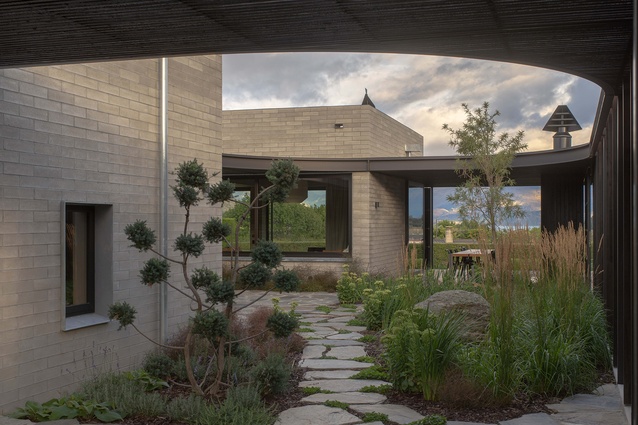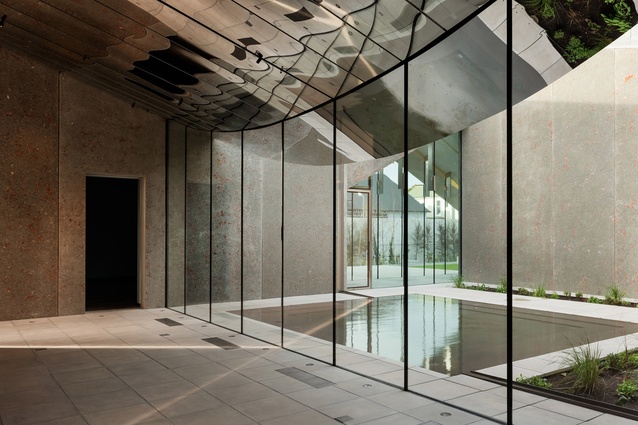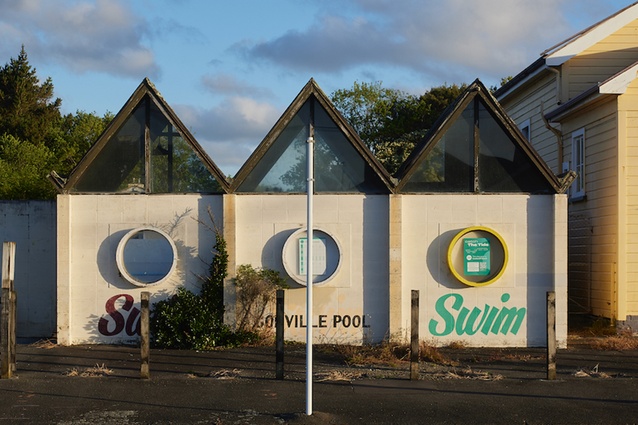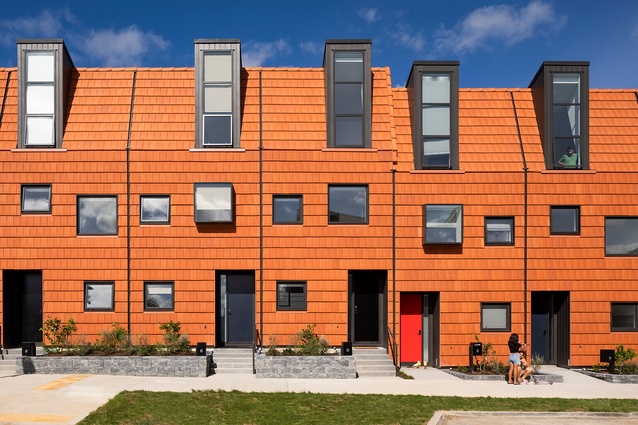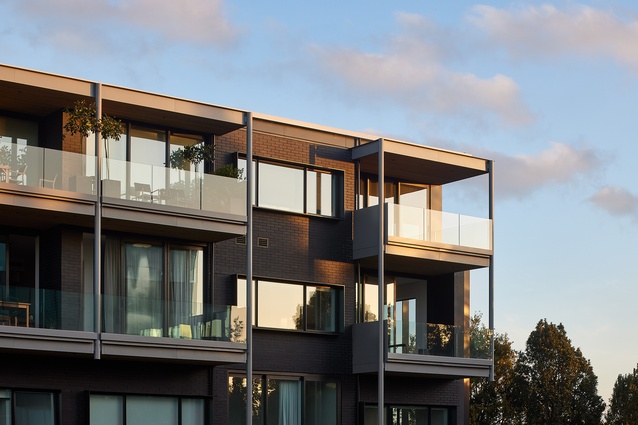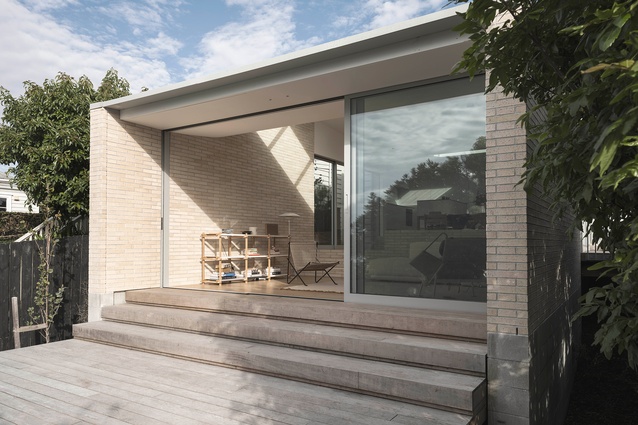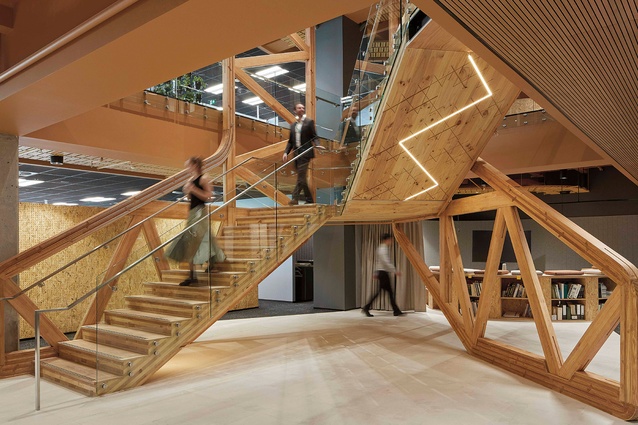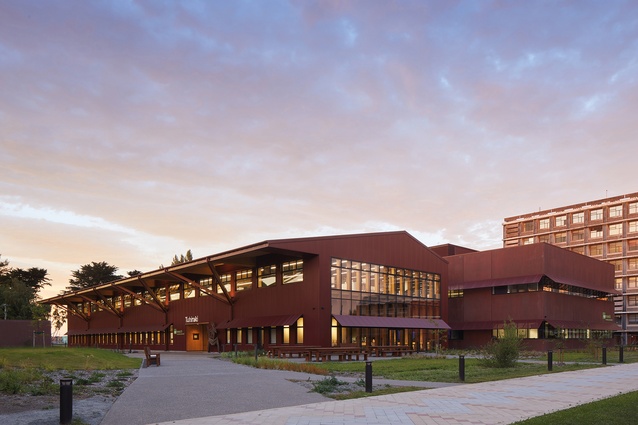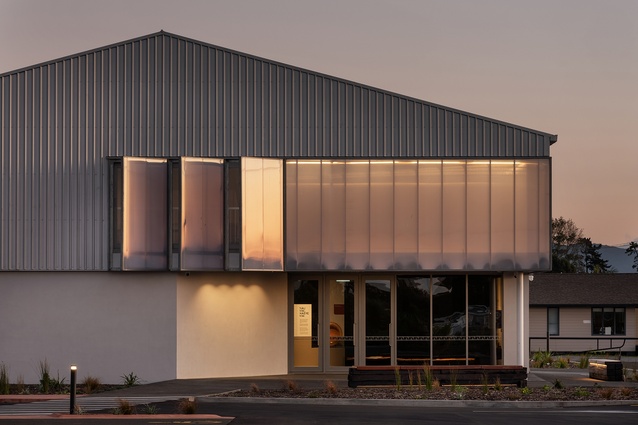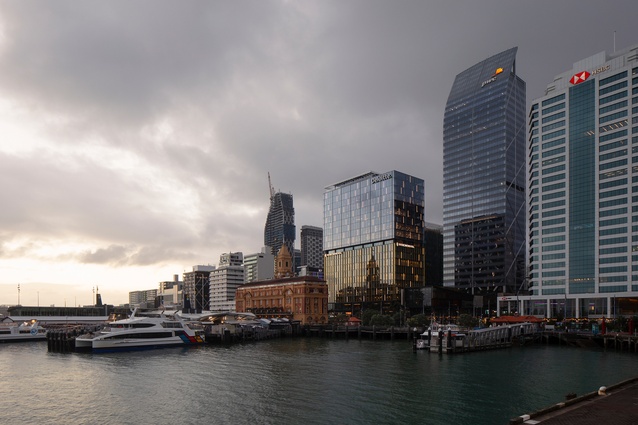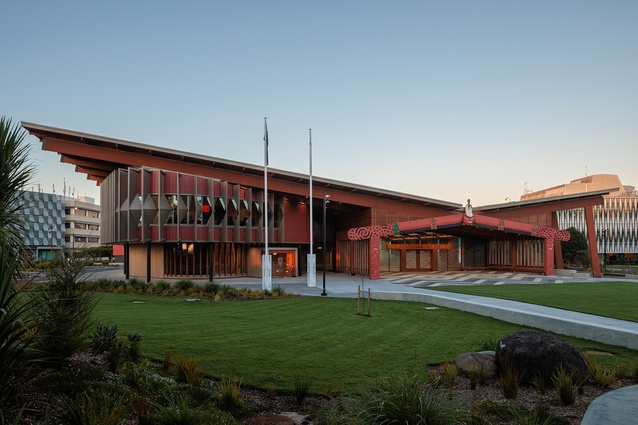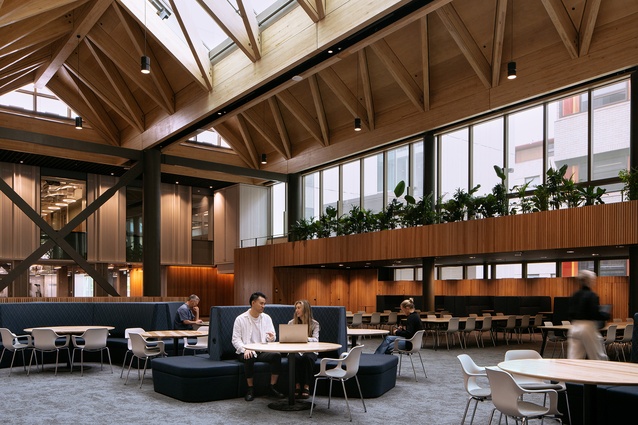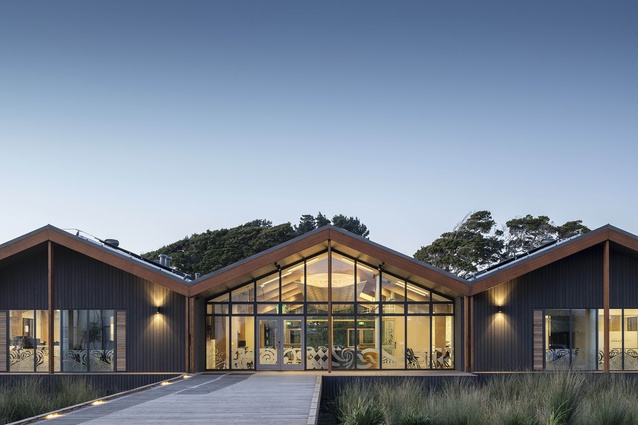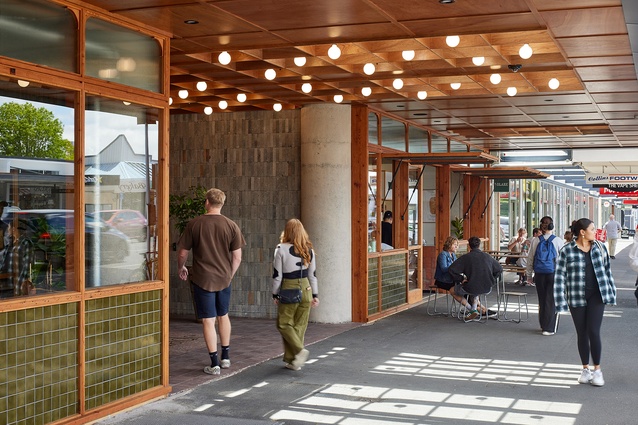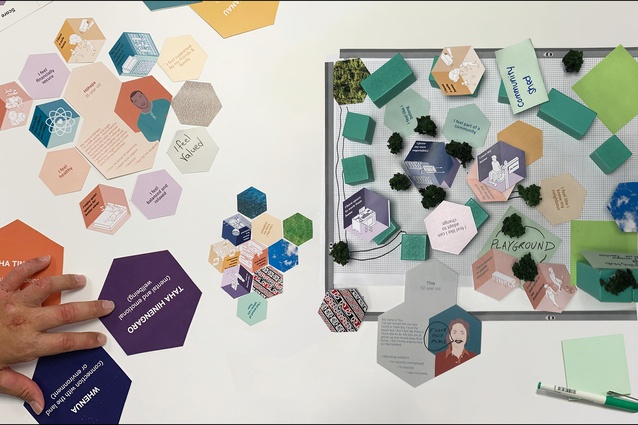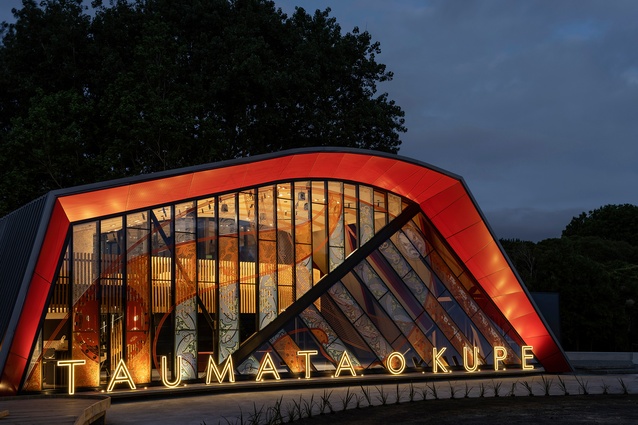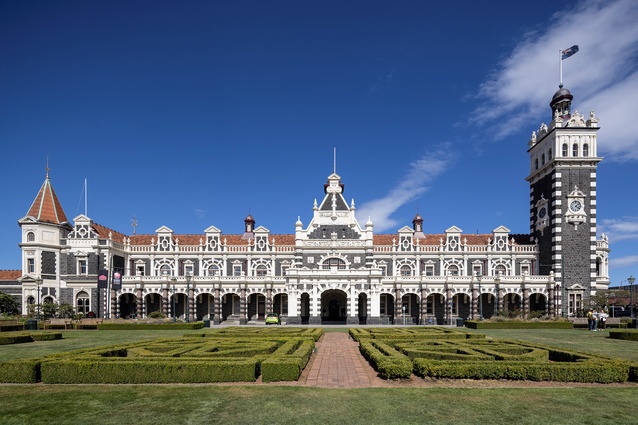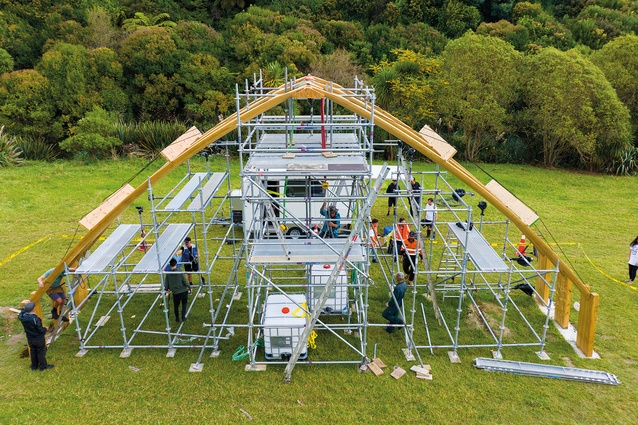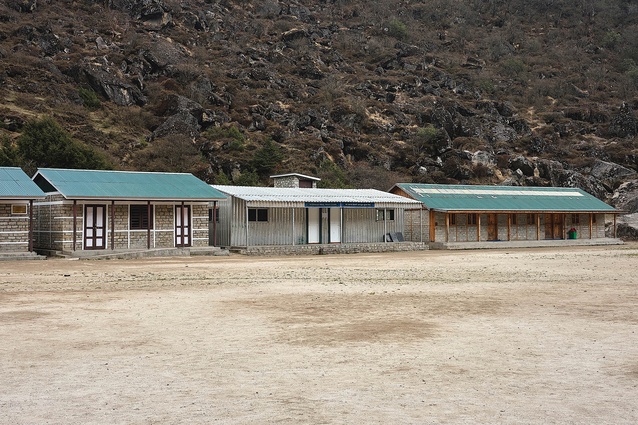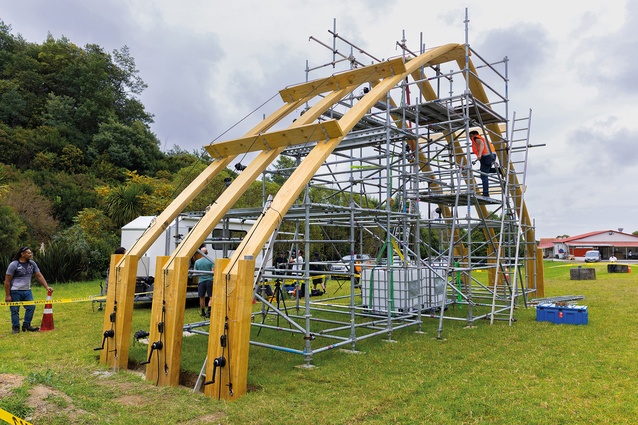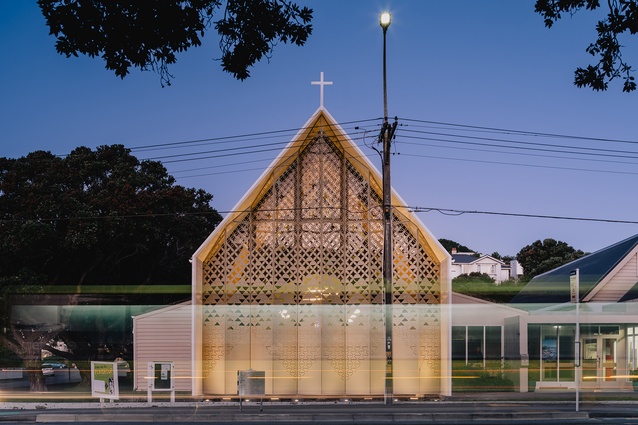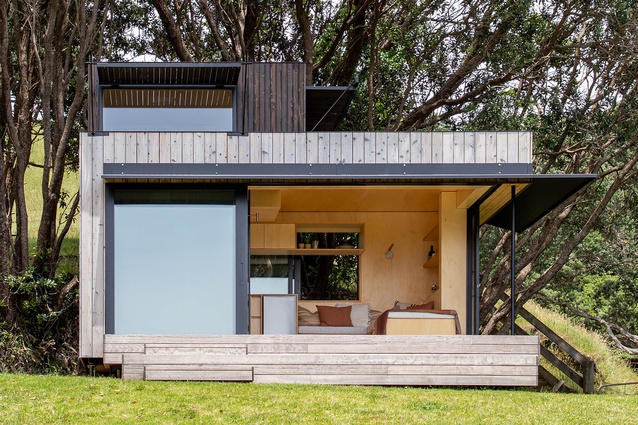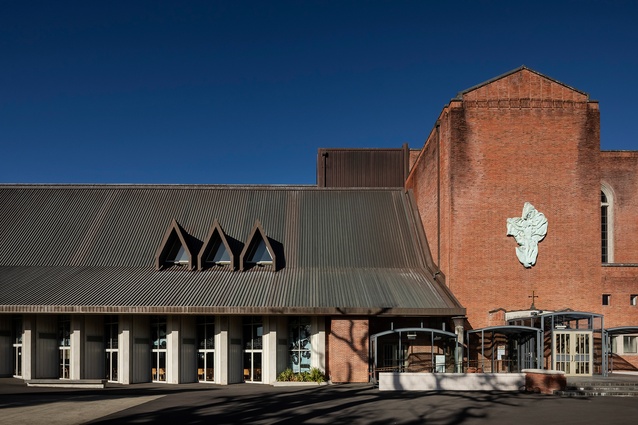Winners announced: 2024 New Zealand Architecture Awards
Te Kāhui Whaihanga New Zealand Institute of Architects (NZIA) has announced the winners of this year's New Zealand Architecture Awards.
This year’s New Zealand Architecture Awards jury was headed by Caro Robertson, principal of Spacecraft Architects. Robertson was joined by Ari Stevens of Athfield Architects, Julie Stout of Mitchell Stout Dodd and guest international juror Patrick Kennedy of Kennedy Nolan in Melbourne, Australia. The jury visited 48 shortlisted projects across 12 categories during late August and early September.
In the official convenor’s message, Robertson acknowledges the collaborative expertise that is required to see architecture of this calibre through to completion: “We were able to see both into the buildings and into the efforts and intentions behind them. Reaching for the sublime in architecture relies on a coordinated team; a client who is in on the architectural magic; and a building team that can follow that magic through. It became clear on our tour that in every project where the architecture was levelled up, the work of talented architects was supported and realised by the relationships that brought the project to life.”
A component of many of the projects visited by this year’s jury was the adaptive reuse of pre-existing buildings. “Many of the shortlisted projects had the added complexity of starting out with an existing building. We were impressed by how many architects took this embodied carbon in hand, using it creatively for a wholly different architectural expression to spring out of,” Robertson adds.
This theme of adaptive reuse stems from a wider focus on sustainability amongst Kiwi architects, with Robertson commenting on the jury’s experience of these buildings: “Alongside lowering carbon and toxins in buildings, comes space that feels well to be in. Operational sustainability goes hand in hand with good siting choices, natural ventilation and planting strategies for surface water management that were a delight to experience.”
The full convenor’s message, winning projects and citations are available in print within the special 2024 New Zealand Architecture Awards edition of Architecture NZ, available to purchase online from 23 November 2024.
View all of the winning projects in the slideshow above, and read on for the jury citations. The named awards can be viewed by clicking the individual links below.
- 2024 Sir Miles Warren Award for Commercial Architecture
- 2024 Ted McCoy Award for Education
- 2024 Sir Ian Athfield Award for Housing
- 2024 John Scott Award for Public Architecture
- 2024 John Sutherland Practice Award
- 2024 F. Gordon Wilson Fellowship for Public Housing
HOUSING:
Wānaka S.K.I House by Roberts Gray Architects
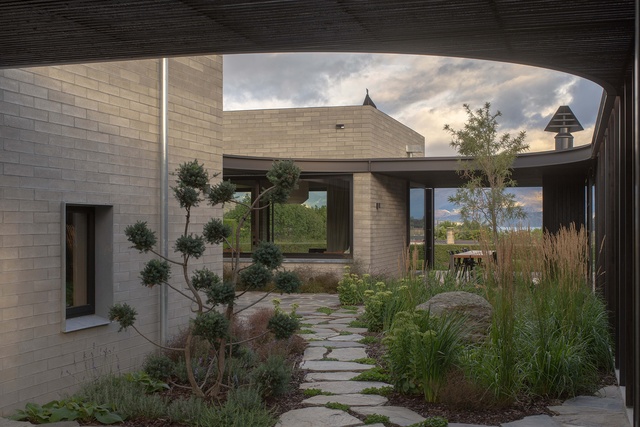
The private house has become a contentious category in architecture as we grapple with issues of sustainability, density and housing security. In response, Roberts Gray has approached this building type with propositions that extend architectural thinking. There is evident speculation about how stubborn vernaculars might be challenged and a suggestion of fresh approaches to materiality, massing, privacy and transparency and balance of built form to landscape.
This meticulously detailed and experientially beautiful house reveals impressive technical ability and a finely wrought aesthetic judgement. Importantly, it also demonstrates architectural thinking in this young practice that could lead to a better urbanism.
Ravenscar House by Patterson Associates
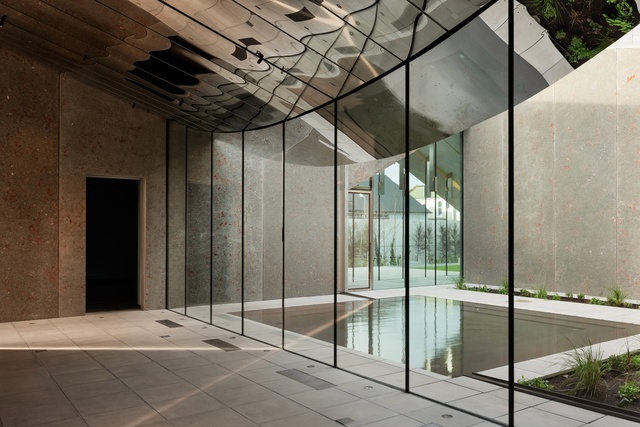
Judges said: “A project rising from destruction, Ravenscar is the generous gifting by Jim and Susan Wakefield of their art and artefact collection to the people of Ōtautahi Christchurch. Following the loss of their home to the earthquakes, the couple decided not to rebuild on the site, but commission a new house/museum in the central city. Granite from their former home, stone donated from the neighbouring Arts Centre and rubble from other cherished buildings have been incorporated into the precast panels of this building.
Ravenscar is a beautifully detailed assembly of four pavilions around a central impluvium. As a piece of architecture, it bridges many readings – is it a house or is it a landscape? With a sense of intrigue in its fortified containment, internal worlds and glazed links open to the surrounding garden. Ravenscar is a new take on the lineage of English influences in the city’s cultural precinct.”
Gonville Pool House by Patchwork Architecture
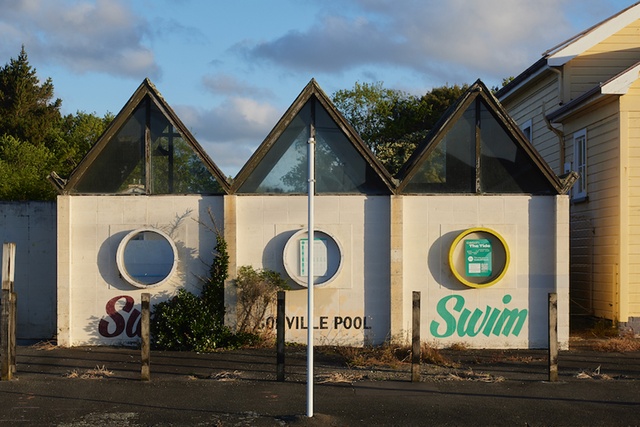
Judges said: “A different take on the adaptive reuse of a public building, a new whare is integrated into the well-loved and architecturally cheerful Gonville Pool. This approach maintains the original characterful street presence, while providing a well-planned, considerately sited new house that artfully uses the defunct pool to bring a productive garden into the centre of the programme.
An artist’s residency retrofit into the changing rooms adds to the local community’s artistic stripe. The former public pool’s infrastructure is visibly integrated into the landscaping of this fun and lively project.”
HOUSING - MULTI UNIT
Kōtuitui Terraces, Stage 2 by Crosson Architects
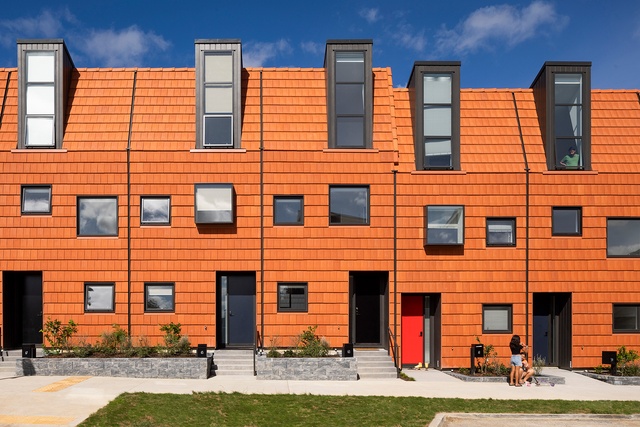
Judges said: “The provision of density in affordable housing is a pressing concern in Aotearoa New Zealand and globally. In this challenging environment, Crosson Architects applies first-principles thinking and creativity to make incremental changes that are more than the sum of their parts.
Working with a motivated client, Kōtuitui Terraces takes a long-term view and imagines better urbanism with thoughtful design, an informed understanding of the positive role of plants and trees and sophisticated architecture that is approachable, dignified, durable and meticulously parsed to deliver an uncommon refinement.
Projects like this are important because they shift the needle. With the housing-development industry characterised by a thoughtless herd mentality, this project provides positive leadership and quality benchmarks.”
Hills Residences by Edwards White Architects
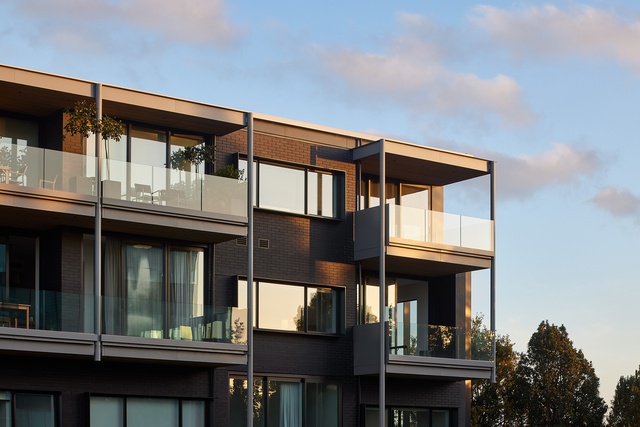
Judges said: “This project addresses several important issues facing contemporary architects. The most pressing is sustainability and the most efficient building is the one we don’t build, so this adaptive re-use of a redundant commercial building is a great urban model. Further elevating the project is the way domestic habitation is understood. A confident and sophisticated approach delivers quality dwellings capable of accommodating a diversity of users in comfortable, livable settings.
Hills Residences forms part of a wider project by Edwards White and their client in celebrating and amplifying Kirikiriroa Hamilton’s qualities through addressing the river, densifying the neighbourhoods and stitching together the city’s parts on and off the site.”
HOUSING – ALTERATIONS AND ADDITIONS
Ridge House by Keshaw McArthur
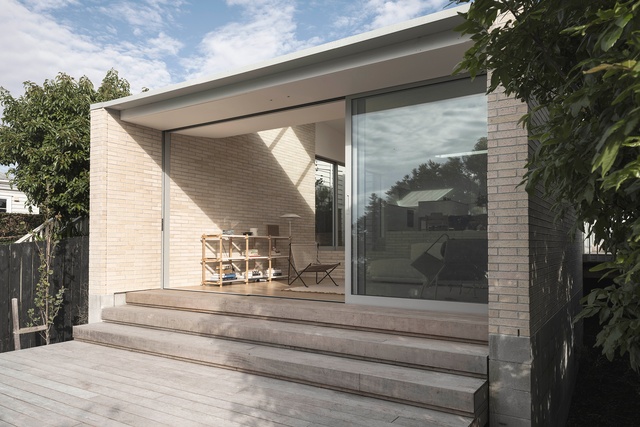
Judges said: “Restrained and elegant, this clever response makes the best of a tight inner-city site. The gradual stepping of levels to maximise the entire site as living areas, the gradual reveal of views to Maungawhau (Mount Eden) and the episodic openings to the sides give this very controlled linear addition the feeling of breathing in and out. The sculptural use of roof lights and a crisp material palette create a calm oasis for family life.”
INTERIOR
Te Tihi – Aurecon Auckland by Warren and Mahoney Architects
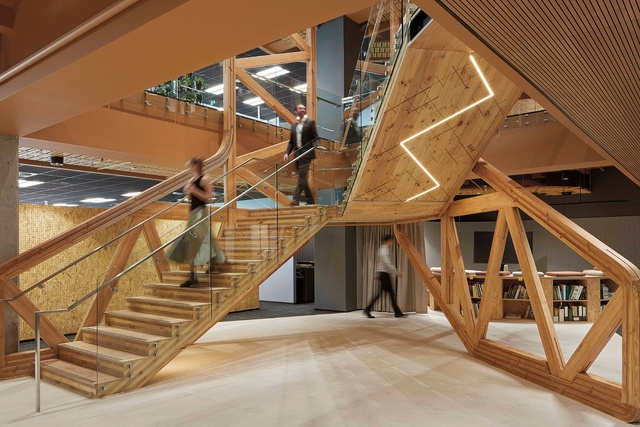
Judges said: “Te Tihi confidently positions itself within the cultural and physical landscape of Ngāti Whatua Ōrakei. Extensive mana mapping has informed a highly effective collaboration with mana whenua, architect and the client’s cultural strategy team He Rautaki Māori.
Relaxed but agile planning, a natural palette with warm timber textures and abundant planting all contribute to a sense of sanctuary within a bustling workspace. The deconstructed waka taurapa (waka stern) central stair adorned with aukaha waka binding pattern references the engineering focus of this workplace and asserts the architecture’s aspiration to facilitate and navigate the convergence of relationships, community and place.
Through collaborative design and storytelling, Te Tihi fosters an environment grounded in respect for the land and people and is an accomplished example of culturally responsive interior architecture.”
COMMERCIAL
Tuhiraki – AgResearch Lincoln Facility by Architectus and Lab-works Architecture
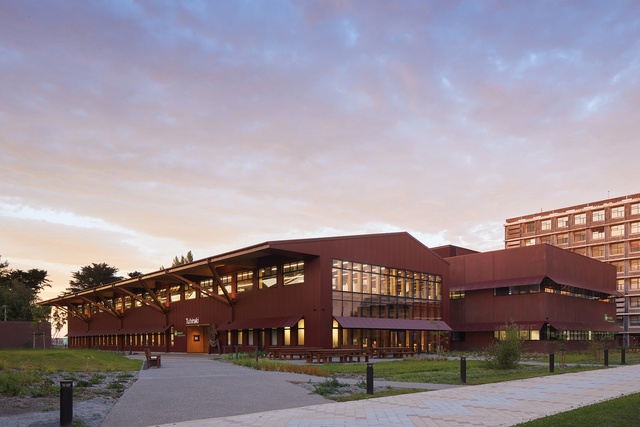
Judges said: “These elegant red sheds sit together comfortably in the rural landscape yet are anything but agricultural in their sophistication. Tuhiraki fosters synergy with Te Whare Wānaka o Aoraki Lincoln University and the broader Canterbury region, while embracing the mana whenua narratives. Tuhiraki shifts the dial for a workplace, showing us a path to a light, bright and sustainable collaborative future focused on wellbeing.
Meticulously rational planning contributes to a sense of effortless wayfinding and the building’s inhabitants are treated to glare-free views and daylight in all directions. The buildings are naturally ventilated, and the efficient use of locally sourced materials and mass timber deliver a 78 percent reduction in carbon footprint, compared to traditionally built structures. A compelling model for beautiful, sustainable commercial architecture.”
Kā Uri, Awanui by Glamuzina Architects
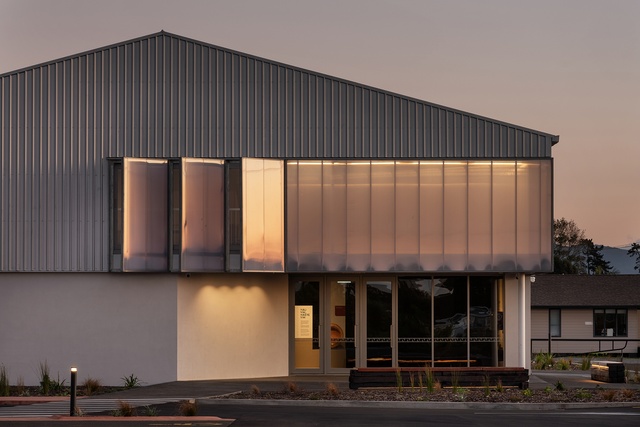
Judges said: “A delightful composition of shadow, translucency and texture, this reimagining of three connected sheds explores the pure atmospheric qualities possible in architecture. Beyond the folded, dappled entry is an art and media gallery relaying the kōrero (narratives) of Ngāti Kuri, who brought this project into being.
The continuation of translucency into a high-level spatially integrated projection surface allows for an immersive media experience. Ascending the spiral stair, carved from a single kauri trunk in 1994 and inserted into the new building fabric, poetically brings manuhiri (guests) to a window to observe the carving workshop beyond – the connection is visceral.
Frequently hosting busloads of tourists on their way up Te Tai Tokerau Northland, the bathroom facilities are a spatial work of art, testament to close collaboration between Glamuzina and multidisciplinary artists Haumi.”
Deloitte Centre – Te Kaha by Warren and Mahoney Architects
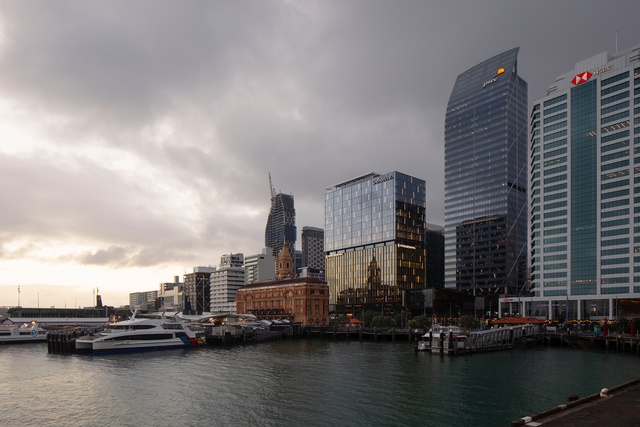
Judges said: “Re-making an existing building better than new is no mean feat, and the Deloitte Centre is a beautiful contribution to the Tāmaki Makaurau Auckland skyline. The artistry of composition is achieved by variation in depth vertically across the façade. This is done in a delightfully simple way by reversing the curtain wall on the lower section and expressing the mullions externally in gold. A broader masterplan collects services at Commercial Bay, freeing up the waterfront building. Covered walkways lead to adjacent office towers plugging this building into its neighbours. Artwork by Pāora Puru further elevates the building, fading in and out, telling stories of volcanic creation in the rohe (region). Installations explore aukaha (binding), set in motion by collaboration with Ngāti Whātua Ōrākei.”
EDUCATION
The Pā by Architectus, Jasmax and DesignTRIBE
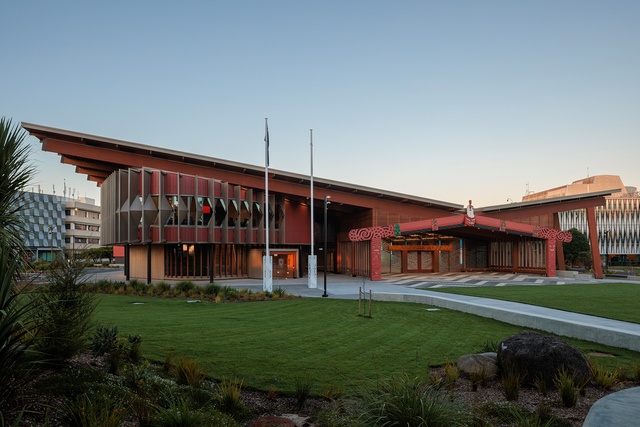
Judges said: “In solving a complex brief to address a dispersed campus layout, The Pā’s project team has brought four large facilities together under one roof and created a new circulation spine to bring order to the campus. The guiding principles of manākitanga and inclusiveness are central to the project’s design ethos, and this is demonstrated in the warmth and generosity of its many gathering spaces. As a backdrop, a heroic structural system of glulam beams pushes the boundaries of this technology to give the project its awesome tectonic strength.”
University of Auckland B201 Building by Jasmax
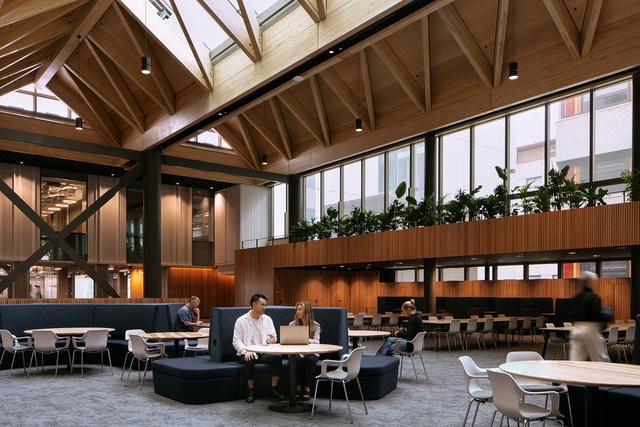
Judges said: “B201 has sought to elevate the mana of Waipapa Marae and Fale Pasifika, connecting them confidently into the heart of the campus. A highly effective collaboration between Ngāti Whātua Ōrākei, Waipapa Taumata Rau University of Auckland and multidisciplinary artists Haumi is evident in the integrated artwork that appears to prioritise dialogue with place in its acknowledgement of whenua, mana whenua, marae and fale.
With exemplary execution of long-pondered masterplan moves, the project masterfully repurposes a tough brutalist structure to transform the cultural precinct, reaching out to connect across and below Symonds Street into the academic heart of the university. In synergy with established street trees, the mesmerising zig-zagging aramoana form of the atrium’s hybrid timber roof structure works impossibly hard to covertly provide light, shade, ventilation and acoustic treatment. B201 has received one of Aotearoa’s highest-ever Greenstar ratings and its low-carbon design and adaptive reuse aspire to set new benchmarks for sustainable educational environments.”
Pā Reo Campus by Tennent Brown Architects
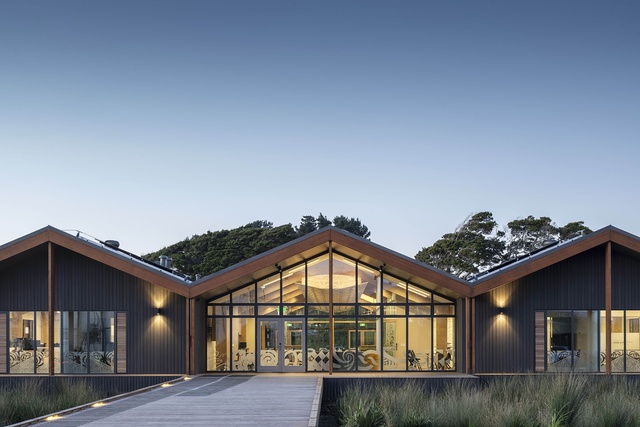
Judges said: “A living building, Pā Reo speaks beautifully of collaboration between client and architect. The whare live and breathe Māoritanga – hīkoia te kōrero (walk the talk). With no need for applied cultural narrative, Pā Reo expresses kaitiakitanga in an elegant, functional, quiet way. Crisply put together, the technical skill and exhaustive research bring the vision of a committed client group to an outcome that can be a kāpehu whetū (star compass) for us all as we wrestle to bring architecture and building into line with respect for Papatūānuku. It is heartening to experience a warm, comfortable, open building that feels good to be in and restores ecological wellness to its immediate environment.”
PLANNING & URBAN DESIGN
MADE by Edwards White Architects
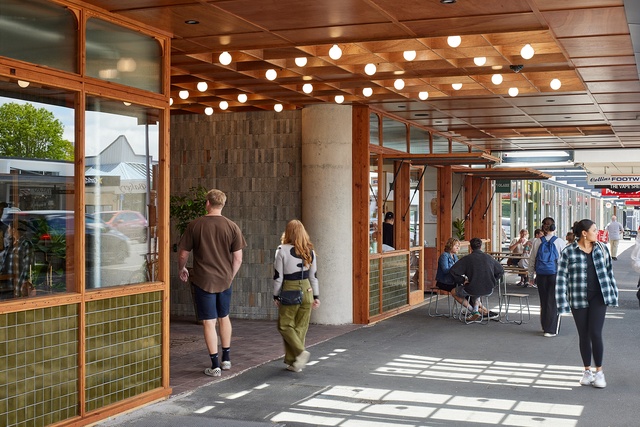
Judges said: “This project articulately connects a section of Kirikiriroa Hamilton’s Victoria Street through an existing building to the Waikato te Awa (Waikato River) waterfront. The architecture draws people through the established shopfront by way of clever use of large-scale mesh and text, which serve as a wayfinding language across a complex site and highlight the urban fabric. The architects have focused attention on existing positive spatial experiences, while adding warmth and texture in the fitout. It was a bold move to keep outdated aesthetic aspects, but the architects have taken this in hand – successfully making full use of the existing building fabric with new elements of smoke-and-mirrors creativity, bringing a social place to life.”
Te Āhuru Mōwai Vision Framework by Isthmus Group
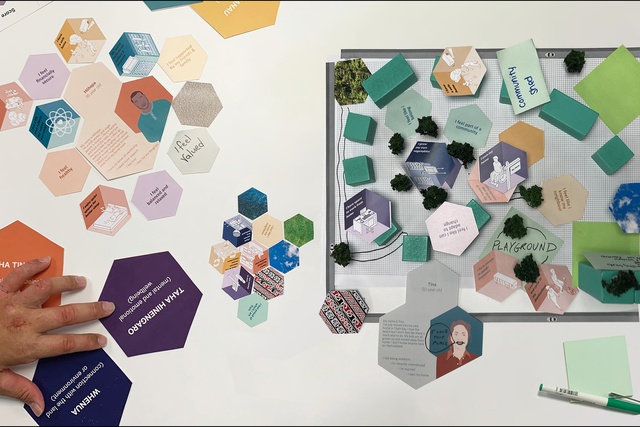
Judges said: “This collaborative project has produced an exemplary model of how to address quality living environments for communities and whenua. The original task for Te Āhuru Mōwai was to rebuild social housing units. However, by taking a broader and long-term view of understanding and engaging with the local people, places and ecologies, the team has leveraged an outcome that aims to heal the past and advance future wellbeing for the area. The Vision Framework documents an impressive process of listening, engaging and embracing complex social situations with compassion, data gathering and case studies to develop key ideas and big moves. The result is a rich and exciting resource, a living document for future development.”
PUBLIC
Te Taumata o Kupe Nuku by TOA Architects
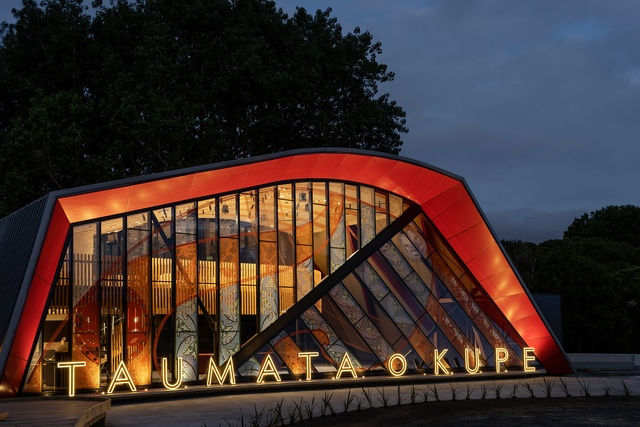
Judges said: “A dynamic expression of Kupe’s voyaging and navigation, Te Taumata o Kupe Nuku forms a new focal point for the marae of Hokianga hapū Te Māhurehure, and a platform from which to share and project ancient mātauranga (traditional knowledge). TOA worked closely with Te Māhurehure to create a wide-reaching masterplan for this complex site, realising a collective vision with Te Taumata o Kupe at its heart. A clear framework for future development has been initiated, including provision for community-focused service providers and a recently completed papakāinga. Te Taumata o Kupe Nuku has significantly enriched the community fabric, honouring its past while shaping its future. This award acknowledges the extraordinary contribution of a design that has grown out of, and for, the community it serves.”
HERITAGE
Dunedin Railway Station Restoration by Salmond Reed Architects
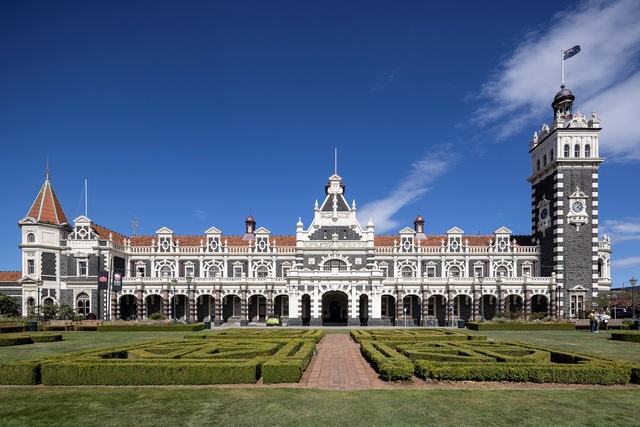
Judges said: “Dunedin Railway Station tells a story of prosperity, ambition and optimism, a grand public building that anticipated the growth of Ōtepoti Dunedin and a country connected by a first-class rail system. Heritage buildings such as these are hugely expensive to preserve and maintain and perhaps the greatest success of this project is involving local makers and preserving and developing building crafts such as stone masonry, detailed metalwork and carpentry, which could otherwise disappear. It is clear that the work is a great source of local pride. This project is pragmatic in the best sense, balancing best-practice heritage principles with finely balanced judgement and sensitive prioritising.”
Whare Mīmīrū by Dr Anthony Hōete and Dr Jeremy Treadwell, in association
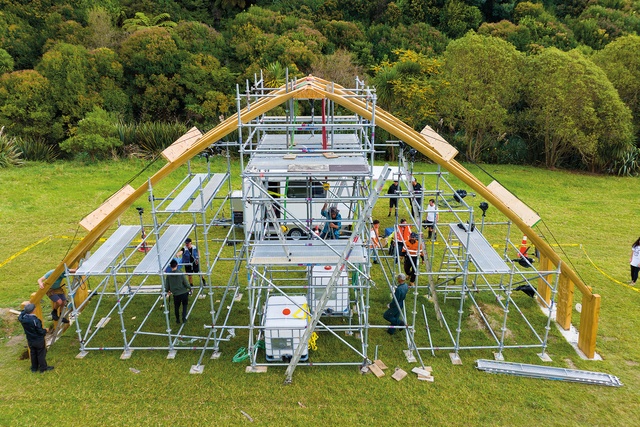
Judges said: “This project is an amplification. A seismic change literally as well as materially. A deep investigation into Aotearoa’s built heritage and construction science, this ongoing project reminds us of who we have been and gives us context for who we will be. Where heritage can be considered the process of fortifying our narratives, Mīmirū reminds us that there is no distinction between engineering and architecture in Māoritanga. Providing us with a new possibility for wide-span carbon-neutral structural frames that we desperately need, Mīmirū lights another path to environmentally respectful building, powerfully bringing ancestral mātauranga (traditional knowledge) into the present.”
INTERNATIONAL
Sir Edmund Hillary Visitor Centre by Pearson & Associates Architects
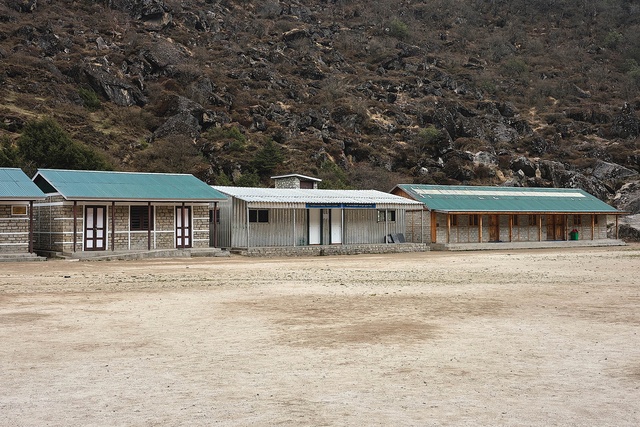
Judges said: “The new visitor’s centre in Khumjung Village is a unique cultural project and international collaboration that celebrates the relationship between the Sherpa First Nations’ people and the Himalayan Trust established 70 years ago by Sir Edmund Hillary. A small aluminium school hut was rebuilt, and its interior is now a richly decorated and informative display. The colourful, multi-layered experience produced by Rick Pearson and his team, and the local Sherpa community, craftspeople and artists, is visually engaging for visitors and locals alike. This award also applauds the sheer effort, tenacity and logistical skills required to realise the project. The commitment and passion to overcome numerous hurdles in creating the centre shine through.”
SMALL PROJECT
Whare Mīmīrū by Dr Anthony Hōete and Dr Jeremy Treadwell, in association
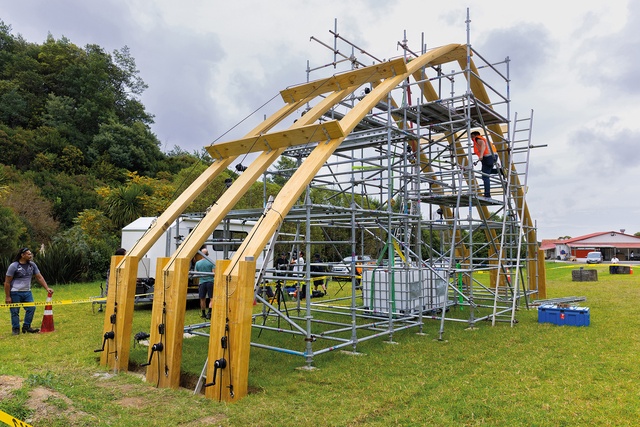
Judges said: “Mīmirū is the most radical of the projects bringing mātauranga into architectural practice that the rōpū has encountered. Close observation of building elements, structural dynamics and fixing points has been clearly drawn out, revealing Mīmiro – the camber and post-tensioning structure, developed for waka hourua (ocean-going canoes) and adjusted to the environment of Aotearoa New Zealand.
Mīmirū describes the elegant original architecture of Māoritanga and the power of pure architectural thinking to communicate. The models and video developed articulate the discoveries in a readily accessible way.”
St Hilda’s Church Renovation by First Light Studio
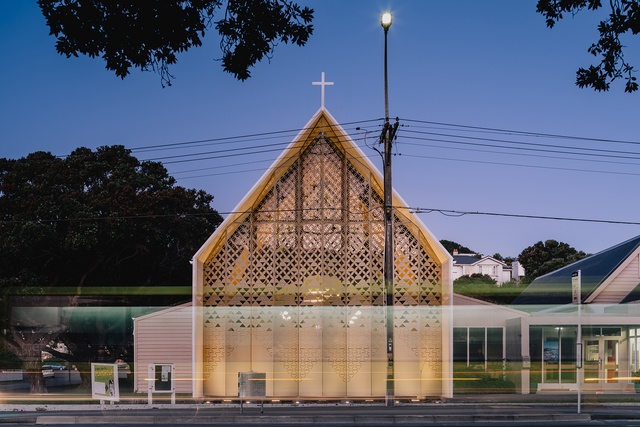
Judges said: “This delightful transformation of a small community church shows what can be done with big imagination and a collaborative spirit. St Hilda’s was built in 1910 as a timber structure with an aspirational brick front to the street. When faced with earthquake-strengthening the brick façade, the congregation and First Light Studio undertook the brave move to demolish it and extend and open the church to the street with a glazed, laminated-timber arched bay window.
St Hilda’s feels utterly contemporary and welcoming by day and night, thanks to a beautifully designed, folded patterned metal screen that modulates privacy and light with a magical effect inside and out.”
Beach Hut by SGA – Strachan Group Architects
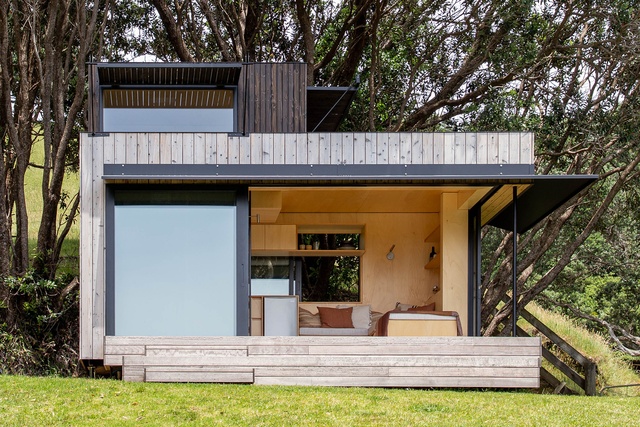
Judges said: “This project is a curation of the bach experience into just enough – a thoughtfully wrought shelter from which to contemplate the glorious environment of Aotearoa New Zealand. Beach Hut celebrates being in our coastal landscape in a quiet, modest way. Architecturally tuned to weather forces, the sensible and well-proportioned shading elements and openings moderate and extend the domestic experience of the tiny spaces. Tucking in storage in delightful and sensible ways, this project is a model for living lightly (at least on holiday!).”
ENDURING
Cathedral Nave | Holy Trinity Cathedral Auckland (1995) by Professor Richard Toy
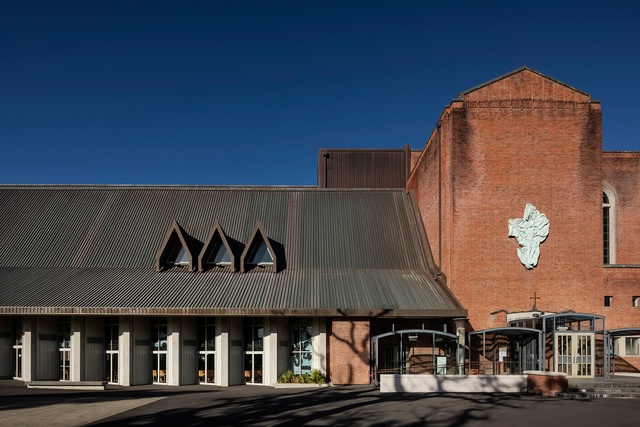
Judges said: “In the late 1980s, Richard Toy’s proposal to shift Benjamin Mountfort’s timber St Mary’s Church across Parnell Road and create a soaring new nave to abut the enclosed brick chancel was not without controversy. Toy’s original scheme had a bell tower and buildings along Parnell Road to form a hilltop village square. None of that was built, however, allowing the new Holy Trinity Cathedral’s heroic timber folded-plate roof to soar clear on the top of Parnell Rise, with its welcoming gesture back to the city. Inside, the big roof appears to float free as low enclosing walls are mainly glazed. The sloping floor puts the focus on the altar, while the volume of the nave is flooded with light and colour from magnificent stained-glass windows. Today, the building freely accommodates an enormous range of activities, from brass-band concerts to state funerals, and is widely used by different public groups. This public-spirited building encapsulates so much of what is wonderful about Tāmaki Makaurau Auckland.”
The New Zealand Architecture Awards receive generous support from Resene, a steadfast sponsor of the program since 1991, and APL, which commenced its sponsorship of the awards in 2021.


